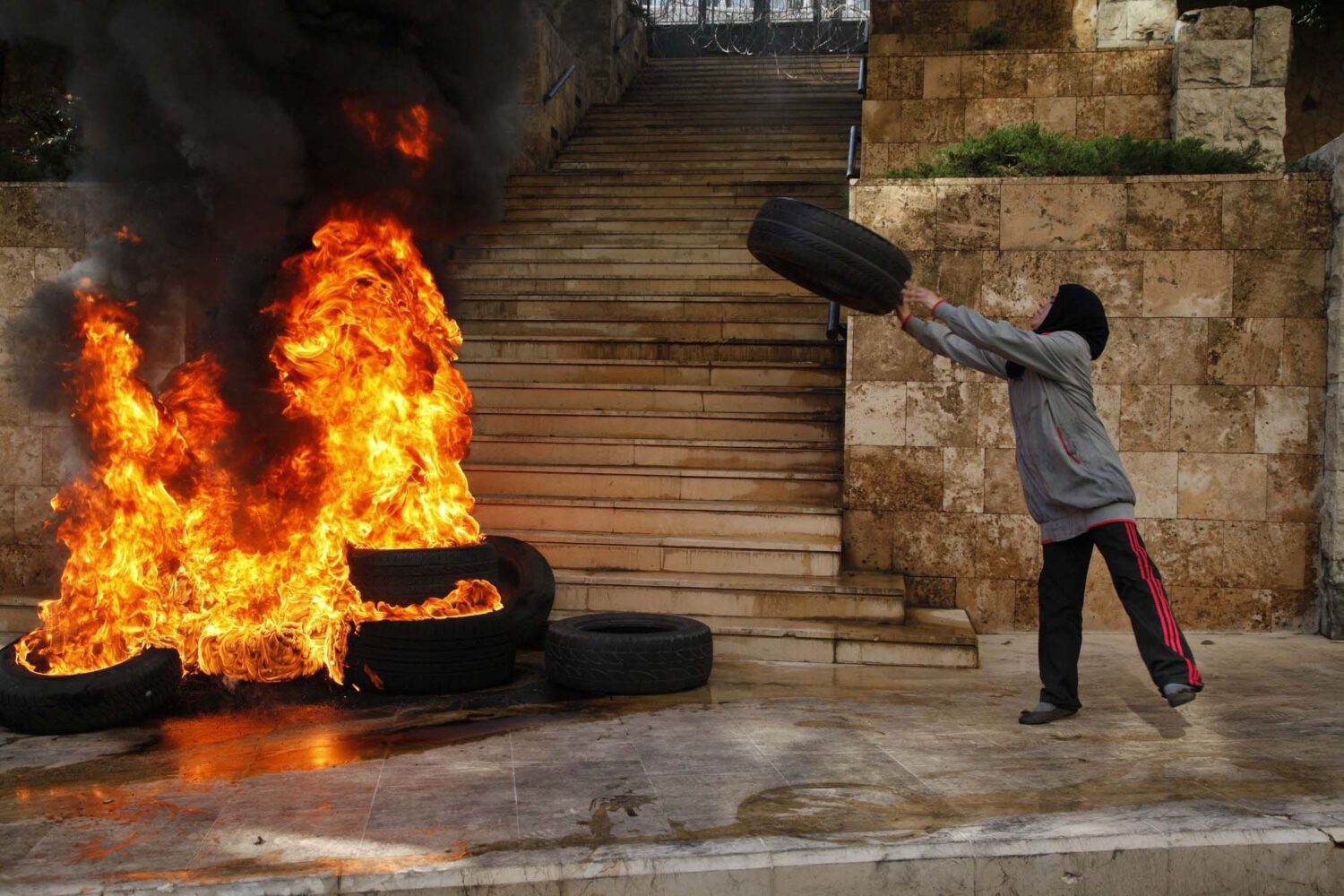
From Hezbollah’s involvement in the Syrian conflict to socio-economic marginalization, many factors are feeding Sunni radicalization in Lebanon.
The fighting between Sunni extremist groups and the Lebanese Armed Forces (LAF) in Lebanon, in the eastern city of Arsal and in the northern city of Tripoli is proof of a growing Islamist threat that extends beyond Iraq and Syria. The fighting resulted in August 2014 in the killing of dozens of soldiers and the kidnapping of about 30 security personnel and LAF members (of whom four have so far been summarily executed). In 2013, the Islamic State (IS) and Jabhat al-Nusra (the Nusra Front) had already formed Lebanese chapters, which have since been responsible for a series of terrorist attacks. In 2014, however, things went further, as a growing number of Lebanese Sunnis seem to have joined these groups.
While some believe that the growth of Sunni extremism—in a country where Sunnis make up roughly a quarter of the population—represents a temporary spillover of the Syrian conflict, others believe the roots are local and deep.
The roots of radicalization
Among the factors contributing to the recent surge of Sunni extremism in Lebanon, the most prominent is perhaps the growing Sunni resentment of Hezbollah, especially after the Shiite movement in May 2013 officially announced its military involvement in Syria, in support of Bashar al-Assad.
But Sunni bitterness toward Hezbollah runs deeper. Many accuse it of being behind assassinations that have targeted key leaders of the Lebanese Sunni community since 2000, in particular, Prime Minister Rafiq Hariri in 2005.
By using its status as an anti-Israel resistance movement, Hezbollah was able to build a powerful arsenal of weapons and a strong militia, which have repeatedly proved crucial in shaping domestic politics to its advantage—and to the detriment of Sunni politicians.
Another major factor is socio-economic. Most of Lebanon’s Sunnis live in areas that are socio-economically marginalized from the rest of the country. In Tripoli, the country’s second largest city, for instance, rising unemployment and poverty have pushed some young Sunnis into extremist groups. According to a study prepared by the Economic and Social Commission for Western Asia (ESCWA) published in January 2015, 57% of Tripoli’s inhabitants are poor and deprived and 26% suffer extreme poverty and are classified in the most disadvantaged category; 35% suffer health problems, 35% live in inadequate housing and 25% have no access to education. These figures reflect the vulnerability of the population and the risk of radicalization.
The rise of religious extremism has also been facilitated by the absence of sound religious leadership. Dar al-Fatwa, the institution officially responsible for providing state-sanctioned Islamic guidance and religious education to Lebanese Sunni Muslims, has been made fragile by internal political divisions, though the election of a new mufti in August 2014 has increased hopes for the institution’s revival.
The Lebanese government’s refugee policy is another risk factor. The repetitive arrests, official closure of borders and tightening restrictions (as on visas, schooling and hospitalization) are contributing to a hostile environment that could favour radicalization. This atmosphere, which is reinforced also by the great economic vulnerability of refugees, may be another factor pushing some Syrians toward militant groups, which often provide financial incentives and care for families and offer a temporary sense of security.
How to curb the tendency?
The growth of radicalization is clear, but the means to curb it are less evident. In the medium and long term, countering the growth of extremism in Lebanon will require the improvement of public infrastructure and the economy in marginalized areas such as the Beqaa Valley and northern Lebanon, where much of the country’s Sunni population lives. Dealing with the roots of Sunni radicalization will also mean addressing Hezbollah’s weapons and its military involvement in Syria.
In the present context, however, these measures seem impossible to implement, given the great polarization in Lebanese society and the limited resources of the state, both politically, in the absence of a president, and financially, with a growing budget deficit and very low growth rates.
Some short-term measures can, however, help prevent further deterioration of the situation. These include, among others, the strengthening of Dar al-Fatwa. The institution could play an effective role by setting up religious de-radicalization programs and by launching a mass-education effort involving outreach programs in the country’s marginalized Sunni areas.
Enhancing the army’s capabilities and trying to bridge the gap between it and the Sunni community is another short-term measure that might prove effective. This could allow the army to play a more effective role throughout the country, while reducing the mistrust of the Sunnis.
The Lebanese government should also begin at least partial reform of its justice and prison systems, including the rehabilitation of the country’s eight overcrowded prisons and 23 detention facilities. Many Islamists are jailed under very poor conditions and have been awaiting trial for several years; this, too, feeds Islamism. Illustrating the importance of this issue, the indirect negotiations taking place since December 2014 between the Lebanese government and Jabhat al-Nusra and the Islamic State—who, in January 2015, still hold more than 25 soldiers and security personnel—involve, among other subjects, the exchange of prisoners.


